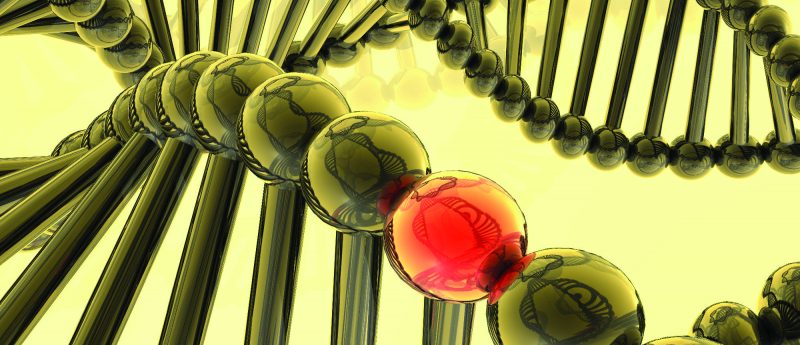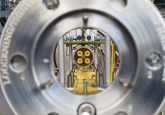Challenges and future predictions for oligonucleotide analysis: an interview with Hans-Peter Vornlocher

In this interview Hans-Peter Vornlocher, managing Director of Research at LGC Axolabs (Kulmbach, Germany), reflects on his career in the oligonucleotide field discussing the benefits and challenges of using oligonucleotides, his future predictions and what emerging technologies could aid analysis in the future.
Could you please introduce yourself and provide a brief summary of your career to date?
My name is Hans-Peter Vornlocher and I am managing Director of Research at LGC Axolabs (Kulmbach, Germany). I was trained as a Biologist and did my PhD in Biochemistry (University of Bayreuth, Germany). After a 3 year PostDoc (UC Davis, CA, USA) working on protein biosynthesis and 3 years of research (at the Institute for Tumor Biology, University of Marburg, Germany and the Max-Planck-Institute for Biophysical Chemistry, Göttingen, Germany) working on mRNA splicing, I joined Ribopharma AG (Germany) in 2001 as Head of Research. Ribopharma was the first company worldwide to develop siRNA-based therapeutics. After Ribopharma merged with Alnylam (Cambridge, MA, USA) in 2003 I served as Vice President of Research at Alnylam Europe until Alnylam Europe became Roche (Basel, Switzerland) in 2007. There I served as managing Director of Research for the Roche Center of Excellence for RNA Therapeutics. In 2011 we started Axolabs as a management buyout from Roche and since then I serve as Managing Director of Research and also hold this positon after the acquisition of Axolabs by LGC (UK) in March this year. Axolabs offers a broad portfolio of services in the area of oligonucleotide and nucleic acid therapeutics including synthesis, analytics/bioanalytics and pharmacology of oligonucleotides.
What does your current role at LGC group, involving the analysis/bioanalysis of oligonucleotides, entail?
The analytics/bioanalytics group which is headed by Dr Ingo Röhl who reports to me.
Why do you think there has been such a growth in demand of oligonucleotides for therapeutics and preclinical applications?
Over the last decade a number of new therapeutic modalities based on oligonucleotides have been identified and developed in the research community. These technologies are now hitting a phase where Biotech and Pharma companies start to develop therapeutic projects with novel therapeutic modalities. Whereas the field started off with Antisense Oligonucleotides (ASOs) and ribozymes (with both platforms ending up in approved drugs) we are now seeing technologies like splice modulators (one approved drug) and siRNAs (with hopefully a first approval in 2018) as follow-up modalities. Further down the road, miRNAs/miRNA inhibitors, activating RNAs, protein binders/decoys and also immune-stimulatory oligonucleotides have entered clinical development. For all these platforms, there is a continuously growing portfolio of development programs in multiple indication progressing in Biotech and big Pharma companies. Additional nucleic acid based therapeutics have also appeared on the scene recently and have/will soon enter clinical phases. This includes: CRISPR-based drugs as well as mRNA-based therapies.
What do you see as some of the main benefits of using oligonucleotides?
The broad variety of oligonucleotides enables diseases to be tackled from different aspects. Expression of target proteins can be inhibited (e.g. ASOs, siRNA) or activated (saRNAs, microRNA inhibitors) transiently. Alternatively, target genes can be permanently inactivated using e.g. the CRISPR approach. Other oligonucleotides address proteins directly and thus inactivate the proteins (e.g. aptamers) or sequester proteins and thereby modulate disease biology. With an in depth understanding of the molecular biology of a disease pathway, the appropriate oligonucleotide/nucleic acid technology can be selected and tailored to modulate this pathway into the desired direction.
In your opinion, what do you think is the best method for oligonucleotide bioanalysis?
Oligonucleotides have, compared to small molecules, a larger molecular mass (anywhere between 5kDa and 35kDa for an oligonucleotide and much more for an mRNA). The basic chemical backbone is identical and repetitive, whereas the bases are different for each compound. Therefore, a bioanalytical assay that detects the oligonucleotide based on sequence-specific recognition is the most specific way to characterize PK and biodistribution of oligonucleotides.
We have developed a hybridization-based HPLC-fluorescence assay, which allows the sensitive and specific detection of oligonucleotides from biological matrices. The assay works extraction free and has successfully been developed for many different oligonucleotide modalities (ASOs, siRNA, aptamers, CRISPR RNAs and many more). Axolabs is offering this assay for discovery work as well as in a regulated GLP/GCP environment.
Describe some of the challenges involved in the bioanalysis of oligonucleotides?
There are a number of challenges associated with the bioanalysis of oligonucleotides. This includes oligonucleotide size as such, chemical variability (e.g. chemical modification, which prevents the use of assays involving enzymes) as well as oligonucleotide secondary structure and interference of encapsulation/targeting components of the oligonucleotide drug. Another problem is the presence of endogenous oligonucleotides, which may interfere with the specific detection of an oligonucleotide
What are your predictions for the future of oligonucleotide bioanalysis?
There will be no ‘one size fits all’ solution for the bioanalysis of oligonucleotides. Methods have to be tailored to the specific compound and have to address the challenges associated with oligonucleotide modality, chemistry, sequence and formulation. With our hybridization-based HPLC assay system we have addressed many of those challenges and will be able to do so for new modalities to come.
Do you think there are any emerging technologies that could improve current analysis?
Given the broad variability of oligonucleotide therapeutics, there won’t be a single new technology that revolutionizes the bioanalysis of oligonucleotides, but rather the continuous development of existing technologies will improve the possibilities in the bioanalysis of oligonucleotides.





